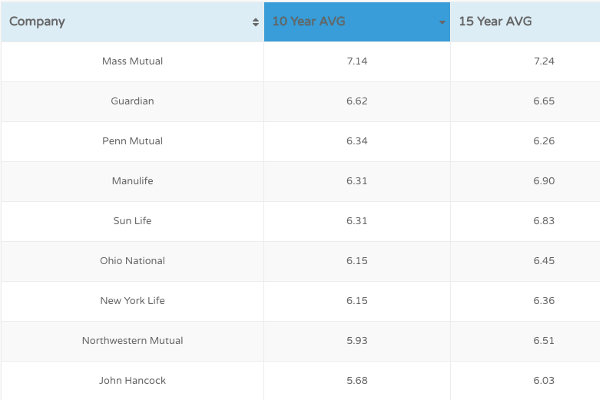As a smart investor, you are always looking for ways to diversify your portfolio and maximize your returns while minimizing your risks. If you haven't considered whole life insurance as a long-term asset, you may be missing out on a valuable opportunity. In this blog post, we will explore why whole life insurance is the safest long-term asset for smart investors.
Click below to get a Quote Now
Get Me A Quote
Click below to get a Quote Now
Get Me A Quote
What is Whole Life Insurance?
Whole life insurance is a type of permanent life insurance that provides lifelong coverage and a guaranteed death benefit. Unlike term life insurance, which only provides coverage for a specific period of time, whole life insurance is designed to last for the insured's entire life as long as the premiums are paid. Whole life insurance also has a cash value component that grows over time and can be accessed through loans or withdrawals.Why Whole Life Insurance is a Safe Investment
There are several reasons why whole life insurance is a safe investment for smart investors:- Guaranteed Death Benefit: One of the biggest advantages of whole life insurance is the guaranteed death benefit. This means that no matter how long you live, your beneficiaries will receive a payout upon your death. This provides peace of mind knowing that your loved ones will be financially secure after you are gone.
- Tax Benefits: Whole life insurance offers several tax benefits, including tax-deferred growth of the cash value component. This means that you do not have to pay taxes on the growth of the cash value until you withdraw it. Additionally, the death benefit is generally tax-free to your beneficiaries.
- Low Risk: Whole life insurance is a low-risk investment because it is not subject to the fluctuations of the stock market. The cash value component grows at a guaranteed rate, which means that you can rely on it as a stable source of long-term growth.
- Asset Protection: In many states, whole life insurance is protected from creditors. This means that if you face financial difficulties, your whole life insurance policy may be exempt from seizure by creditors.
- Inflation Protection: Whole life insurance provides inflation protection because the death benefit and cash value component are adjusted for inflation over time. This means that your policy will retain its value over the long term, even as the cost of living increases.
Secure Your Future Now! Get Whole Life Insurance Today
Click below to get a Quote Now
Get Me A Quote
How to Invest in Whole Life Insurance
Investing in whole life insurance is relatively simple. Here are the basic steps:- Choose a reputable insurance company: Look for an insurance company with a strong financial rating and a history of paying dividends to policyholders.
- Determine your coverage needs: Calculate the amount of coverage you need based on your financial goals and the needs of your beneficiaries.
- Choose a policy: There are several types of whole life insurance policies, including traditional whole life, universal life, and variable life. Each type of policy has its own features and benefits, so choose the one that best fits your needs.
- Pay your premiums: Whole life insurance premiums are typically higher than term life insurance premiums, but they are also fixed for the life of the policy. Make sure you can afford the premiums before you commit to a policy.
- Monitor your policy: Review your policy annually to ensure that it continues to meet your needs. You may need to adjust your coverage or premium payments over time.
Conclusion
Whole life insurance is an often-overlooked investment opportunity for smart investors. It offers a guaranteed death benefit, tax benefits, low risk, asset protection, and inflation protection. By investing in whole life insurance, you can diversify your portfolio and ensure long-term financial security for yourself and your loved ones. As with any investment, it's important to do your research and work with a reputable insurance company to ensure that you get the best possible return on your investment.Secure Your Future Now! Get Whole Life Insurance Today
Click below to get a Quote Now
Get Me A Quote




